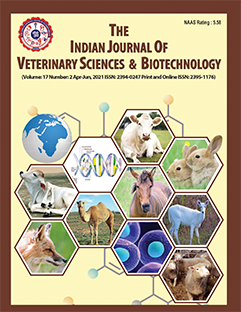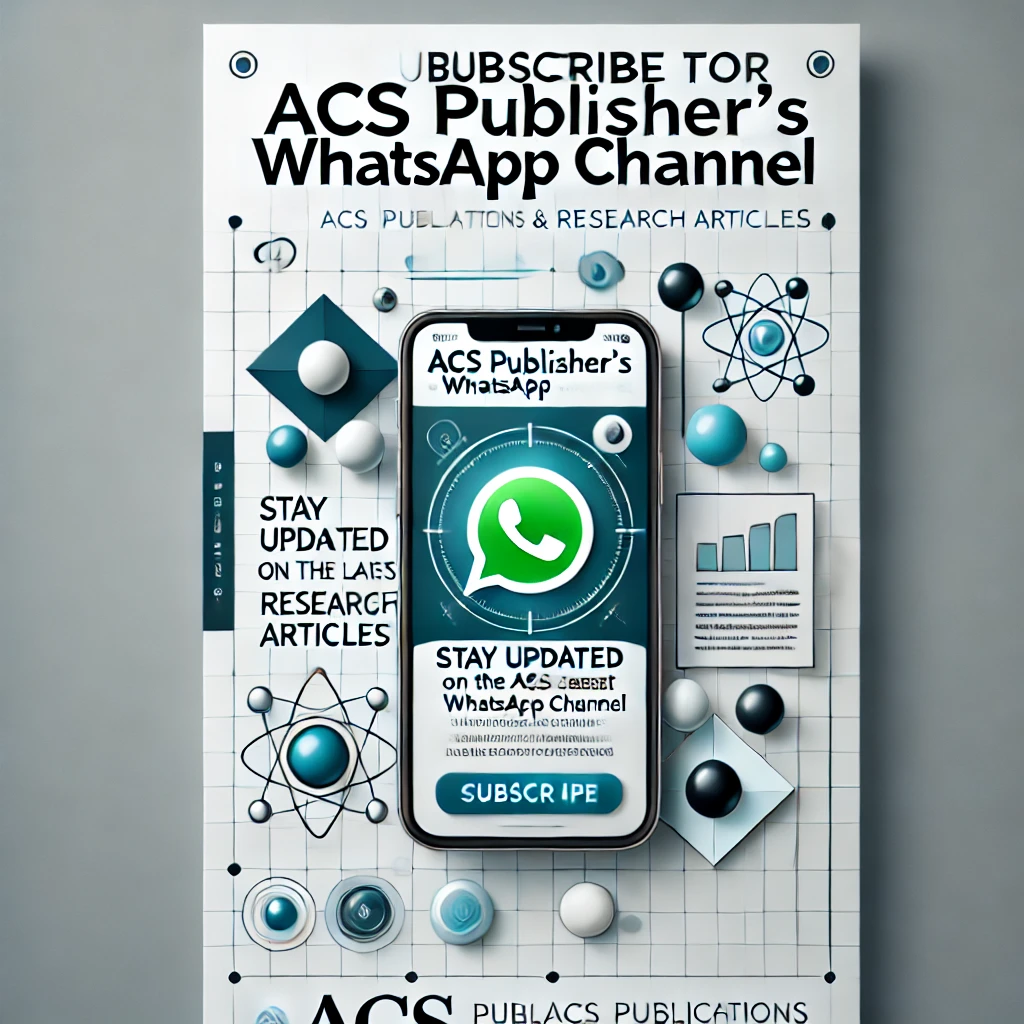Anatomical Studies on the Reticulum of Adult Non-Descript Sheep of Jammu Region
DOI:
https://doi.org/10.48165/ijvsbt.21.3.21Keywords:
Anatomy, Histology, Histochemistry, Reticulum, SheepAbstract
Present study was carried out on six stomach samples from adult apparently healthy non-descript sheep. Reticulum was spherical and was separated from rumen by rumino-reticular groove ventrally. Mucosa was pale brown in colour. Reticular cells were subdivided by secondary and tertiary crests. Mean empty weight of reticulum was 13.11% of the total empty weight of the stomach whereas the capacity was 6.04% of the total volume of the stomach. The dorso-ventral height of reticulum was greater than its cranio-caudal width. Histologically, reticulum consisted of tunica mucosa, tunica submucosa, tunica muscularis and tunica serosa. Lamina epithelialis was lined by keratinized stratified squamous epithelium. Lamina muscularis mucosae was present only towards the tip of primary reticular crests. Tunica muscularis had inner circular and outer longitudinal layers of smooth muscle.Thickness of outer muscular layer, length of reticular crest and width of reticular crest showed significant difference (p<0.05) and were higher at greater curvature. Histochemically, stratum corneum showed strong PAS reaction, stratum granulosum showed strong reaction for Alcian blue (pH 2.5). Distribution of glycogen was moderate in the layers of lamina epithelialis mucosae, except stratum corneum. Lamina epithelialis mucosae and tunica muscularis showed strong reaction for basic proteins. Stratum corneum showed moderate to strong reaction for lipids.
Downloads
References
Clauss, M., Hofmann, R.R., Fickel, J., Streich, W.J., Hummel, J., & Foundation, G.W. (2009). The intraruminal papillation gradient in wild ruminants of different feeding types: implications for rumen physiology. Journal of Morphology, 270, 929-942.
Colville, T., & Bassert, J.M. (2008). Clinical Anatomy and Physiology for Veterinary Technicians. 2nd Edn., Mosby Elsevier, pp: 274-276.
Dyce, K.M., Sack, W.O., & Wensing, C.J.G. (2002). The abdomen of ruminants. In: Textbook of Veterinary Anatomy. 3rd Edn., WB Saunders Co., Philadelphia., pp: 666-690.
Eurell, J.A., & Frappier, B.L. (2006). Dellmann’s Textbook of Veterinary Histology. 6th edn., Blackwell Publishing, p. 18.
Fritz, J., Hummel, J., Kienzle, E., Arnold, C., Nunn, C., & Clauss, M. (2009). Comparative chewing efficiency in mammalian herbivores. Oikos, 118, 1623-1632.
Gordon, I.J. (2003). Browsing and grazing ruminants: are they different beasts? Forest Ecology and Management, 181, 13-21. Jerbi, H., Bayoudh, M., Clauss, M., & Perez, W. (2016). Gross anatomy of the stomach of the dorcas gazelle (Gazella dorcas, Linnaeus, 1758). International Journal of Morphology, 34(4), 1266-1270. Konig, H.E., & Liebich, H.G. (2009). Veterinary Anatomy of Domestic Animals. Textbook and Color Atlas. 4th Edn., Schattauer, pp: 336-340.
Kumari, P., Panchal, K.M., & Vyas, Y.L. (2013). Gross and biometrical studies on viscera of Black Buck (Antelope cervicapra). Indian Journal of Veterinary Anatomy, 25(2), 86-88.
Lakshmishree, K.T. (2014). Gross and Histomorphological studies on forestomach of wild ruminants in comparison with domestic ruminants. Retrieved from krishikosh. egranth.ac.in.
Luna, L.G. (1968). Manual of Histological Staining Methods of Armed Forces Institute of Pathology. 3rd Edn., McGraw Hill Book Company, New York, pp 34-157.
Machado, M.R.F., & Oliveira, F.S. (2008). Gross anatomy of the stomach of the Marsh deer. Brazilian Journal of Morphological Sciences, 25(1-4), 1-34.
Mahendrakumar, S.T. (2017). Gross, biometrical and histological studies on the ruminant stomach of the Surti goat (Capra hircus). M.V.Sc Thesis. Anand Agricultural University, Gujarat, India.
Malik, S.A. (2014). Anatomical studies on the oesophagus and stomach of Gaddi sheep. M.V.Sc Thesis, Chaudhary Sarwan KumarHimachal Pradesh Krishi Vishvavidyalaya, Palampur (H.P), India.
Mosavat, N., & Chamani, M. (2013). A review: Comparison between grazing behavior of cattle and sheep. Global Journal of Biodiversity Science and Management, 3(2), 138-140.
Nurliani, A., Budipitojo, T., & Kusindarta, D.L. (2015). Morphological characteristics of the stomach of swamp buffalo (Bubalus bubalis). Aceh International Journal of Science and Technology, 4(3), 78-82.
Pachpande, A.M. (2008). Gross anatomical, histological and histochemical changes in the gastrointestinal tract during postnatal period in goat (Capra hircus). Ph.D. Thesis. Bombay Veterinary College, MAFSU, Nagpur, India.
Perez, W, Erdogan S., & Ungerfeld R. (2015). Anatomical study of the gastrointestinal tract in free-living Axis deer (Axis axis). Anatomia Histologia Embryologia, 44, 43-49.
Pérez, W., & Vazquez, N. (2012). Gross anatomy of the gastrointestinal tract in the Brown Brocket deer (Mazama gouazoubira). Journal of Morphological Sciences, 29(3), 148-150
Poonia. A., Kumar, P., & Kumar, P. (2012). Histological studies on the omasum of the sheep (Ovis aries). Indian Journal of Veterinary Anatomy, 24(2), 95-98.
Ramkrishna, V., & Gadre, K.M. (2004). A Systemic Histology of Domestic Animals. 2nd Edn., Jaypee Brothers, Medical publishers Ltd., India, pp: 10-14.
Reece, W.O. (2005). Digestion in the ruminant stomach. In: Dukes’ Physiology of Domestic Animals. 12th Edn., Panima Publishing Corporation., pp: 438-474.
Sasan, J.S., Suri, S., & Sarma, K. (2022). Anatomical studies on the reticulum and reticular groove of non-descript goats of Jammu region. Journal of Animal Research, 12(3), 363-370.
Sasan, J.S., Suri, S., & Sarma, K. (2023). Anatomical studies on the reticulum of Bakerwali goat of Jammu region. Journal of Animal Research, 13(3), 363-372.
Scala, G., Corona, M., & Maruccio, L. (2011). Structural, histochemical and immuno-cytochemical study of the forestomach mucosa in domestic ruminants. Anatomia Histologia Embryologia, 40, 47-54.
Snedecor, C.W., & Cochran, W.G. (1994). Statistical Methods. 9th Edn., Iowa State University press, Ames, Iowa, USA.
Sultana, N., Islam, R. Afrose, M., & Jannat N. (2021). Morphometry and biometry of gastrointestinal tract of indigenous sheep. Advances in Animal and Veterinary Sciences, 9(10), 1739-1744.
Wang, J., Haiyan, L., Zhang, L., Zhang, Y., Yue, M., Shao, B., & Wang, J. (2014). Histomorphometric characterization of forestomach of yak (Bos grunniens) in the Qinghai-Tibetan Plateau. International Journal of Morphology, 32(3), 871-881.
Downloads
Published
Issue
Section
License
Copyright (c) 2025 Indian Journal of Veterinary Sciences and Biotechnology

This work is licensed under a Creative Commons Attribution-NonCommercial-NoDerivatives 4.0 International License.




